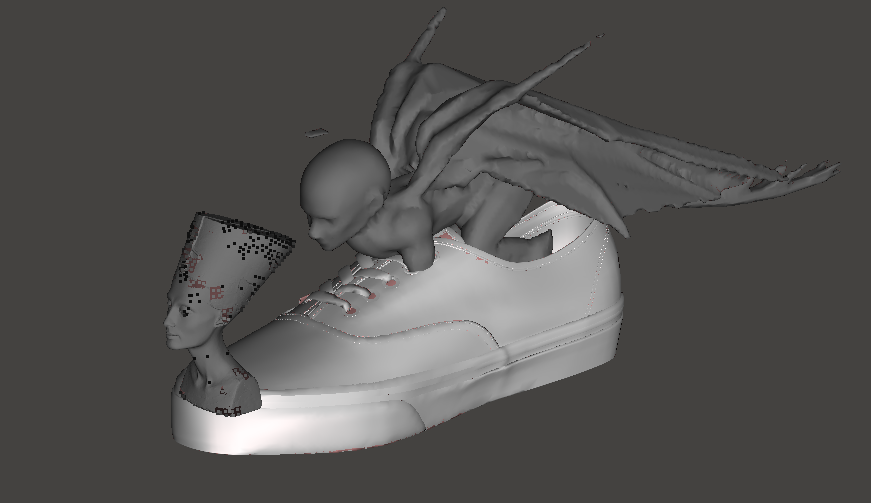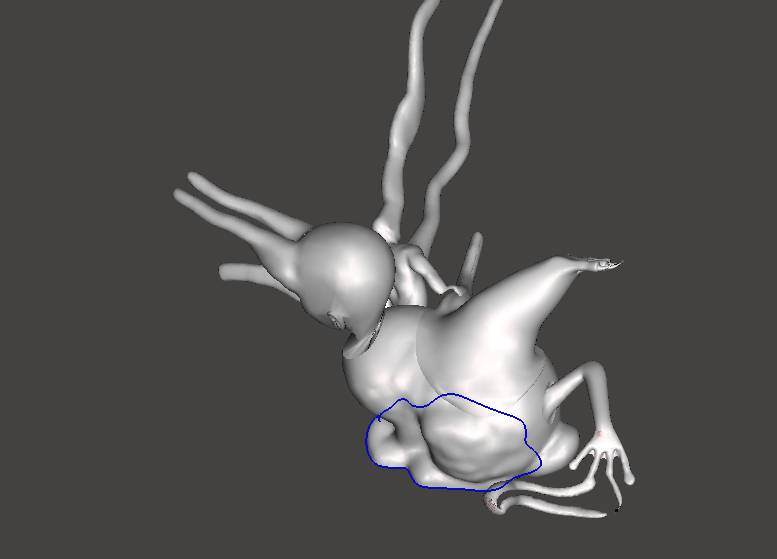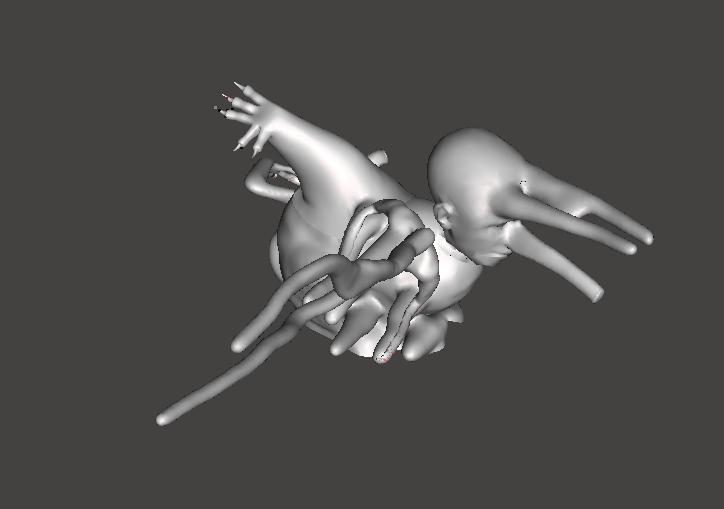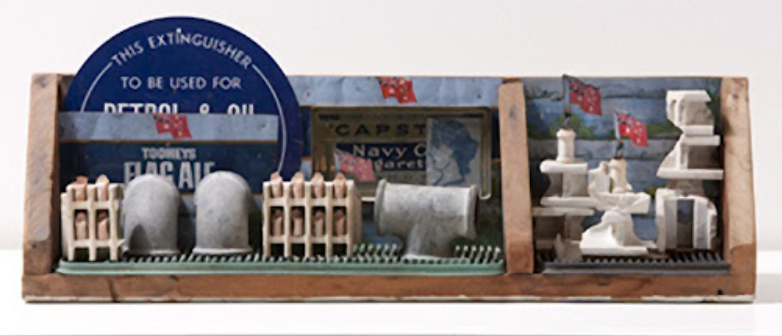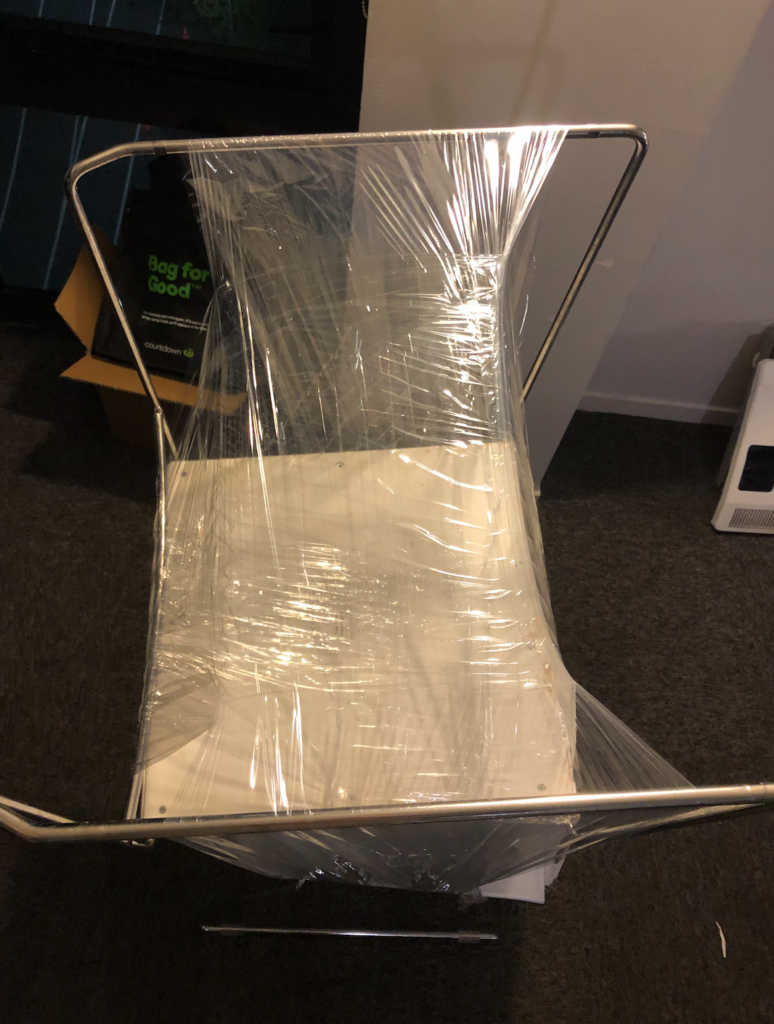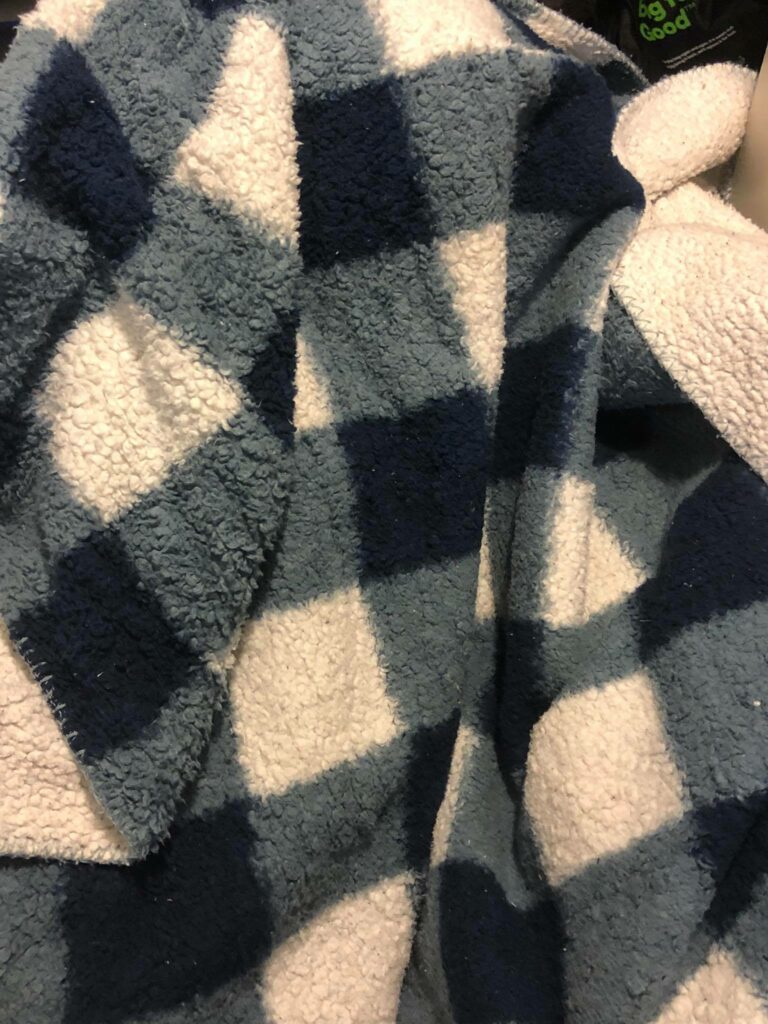
Blanket 1 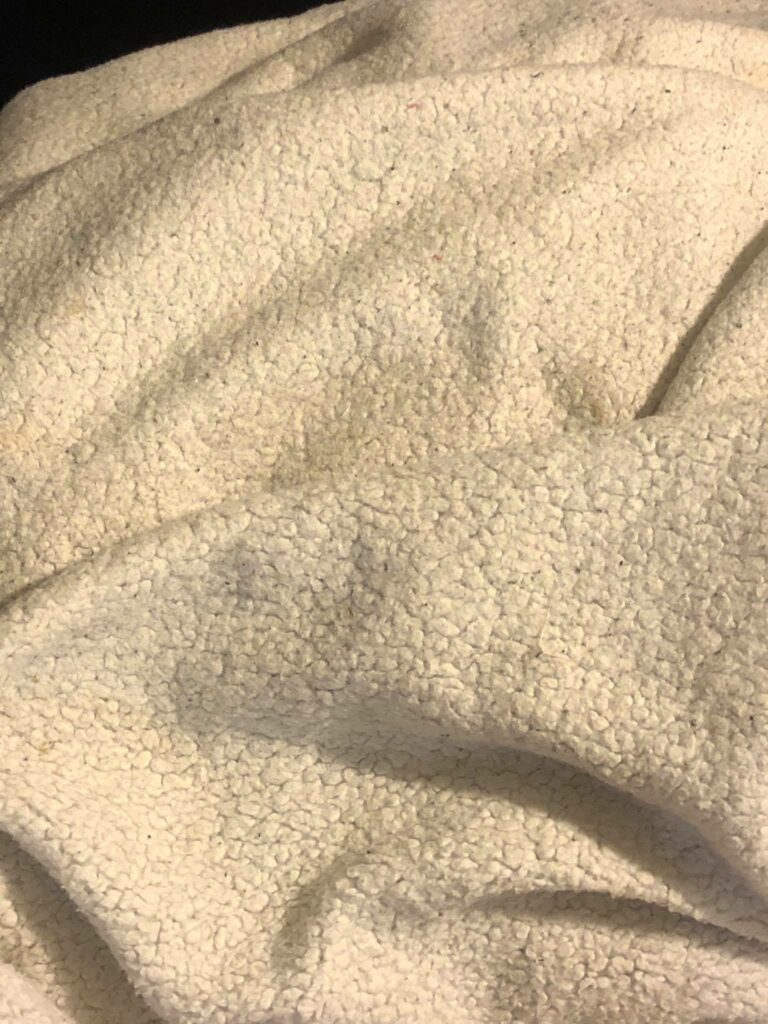
Blanket 2 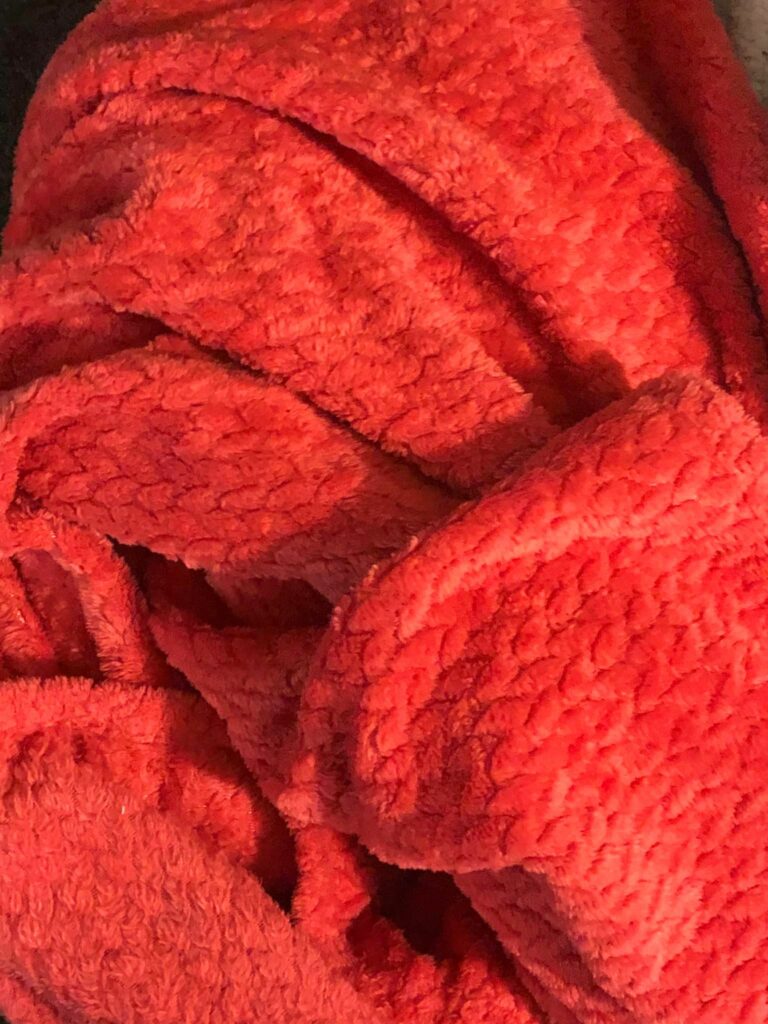
Blanket 3 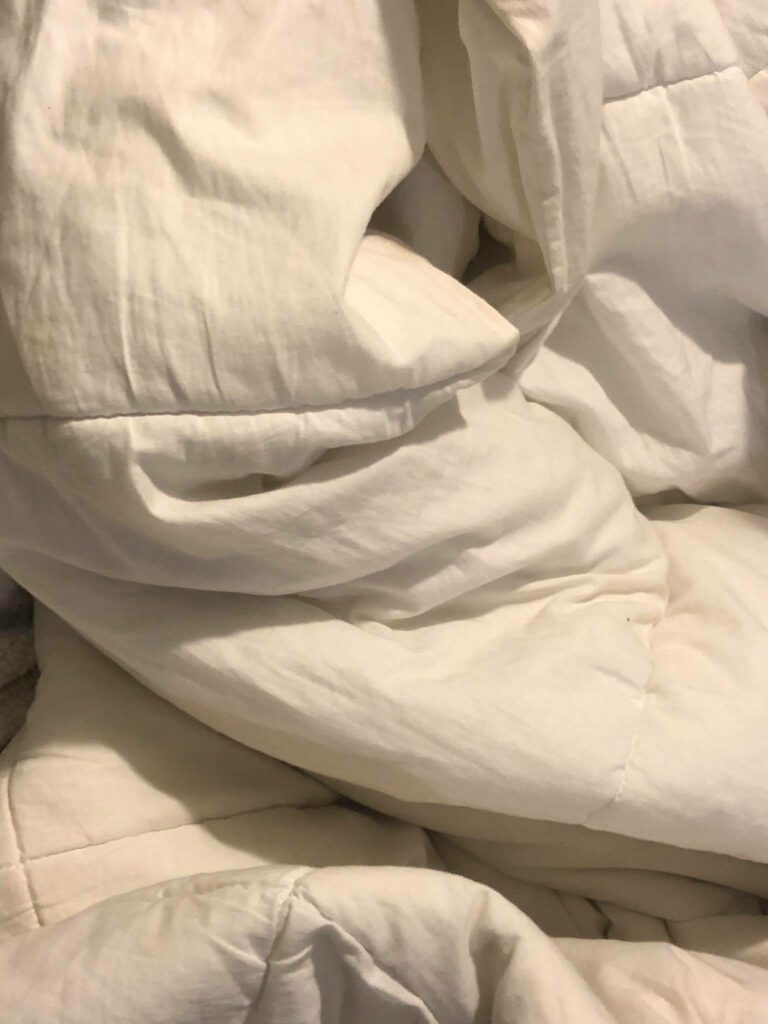
Blanket 4 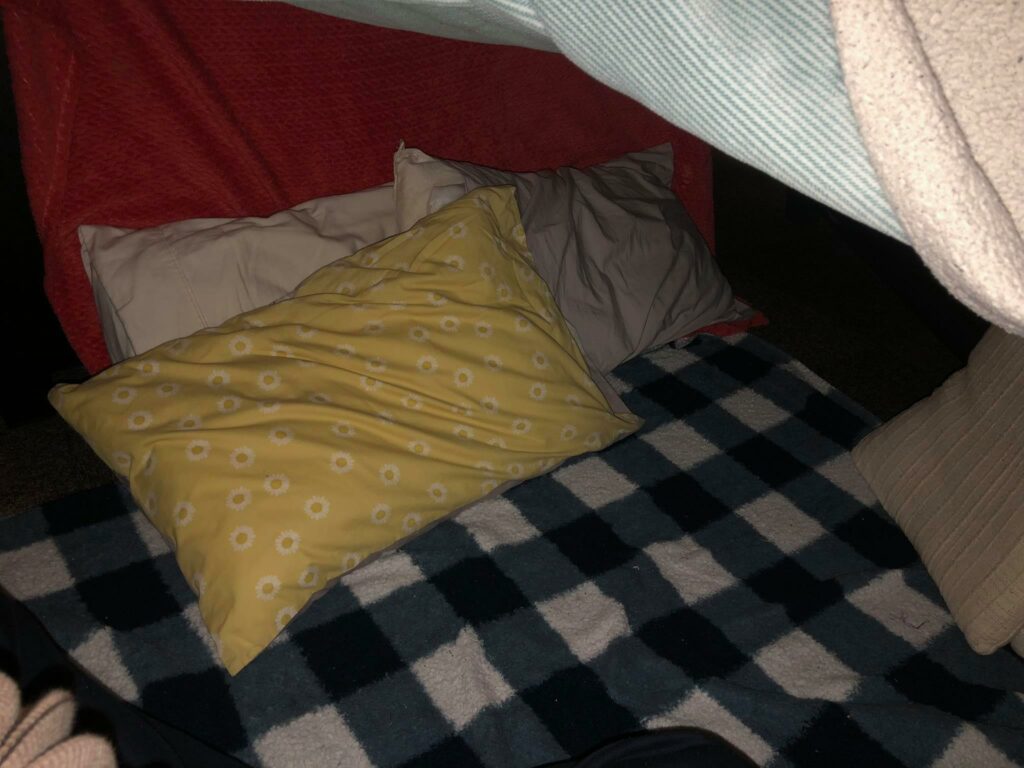
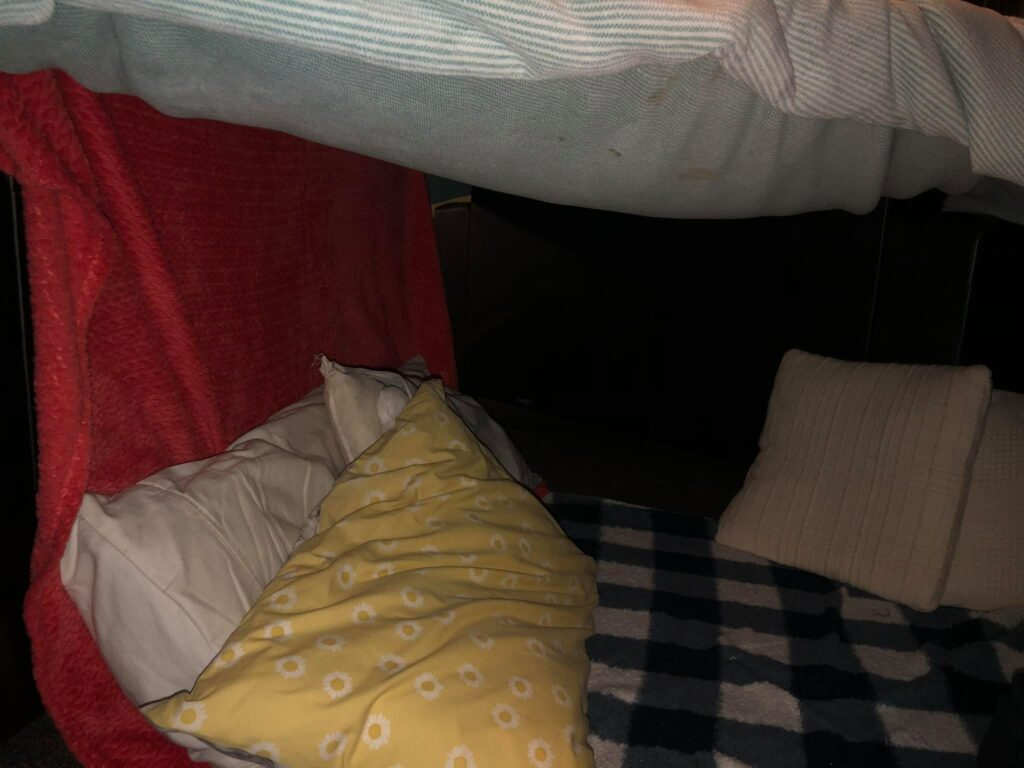
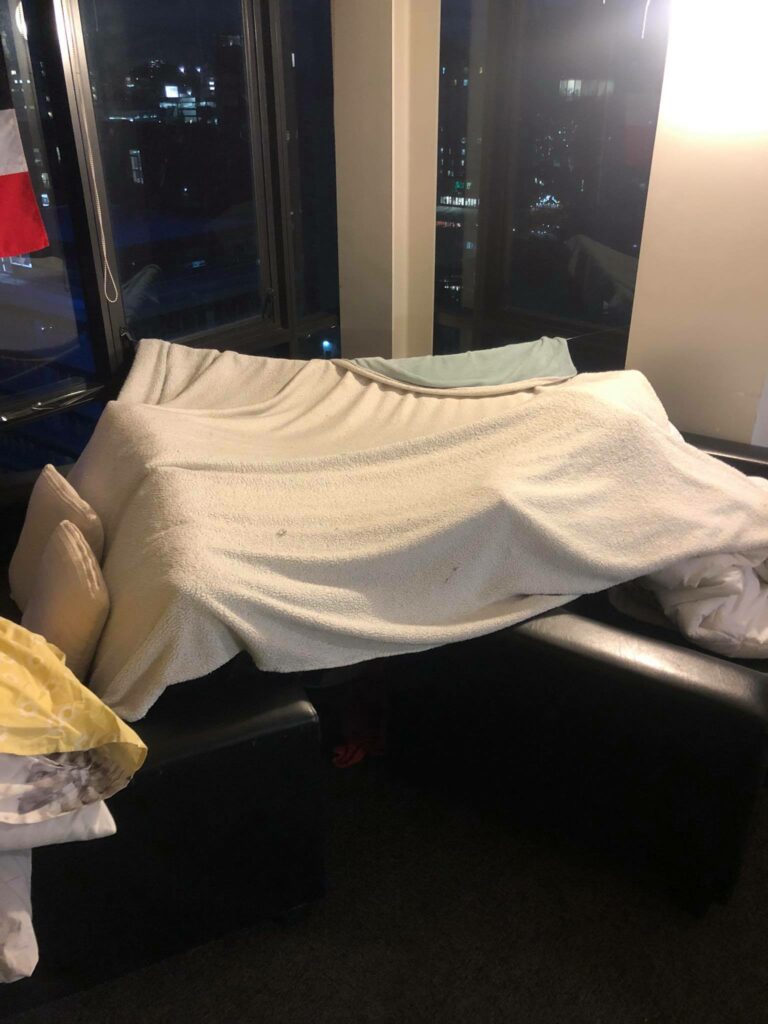
Blanket Fort 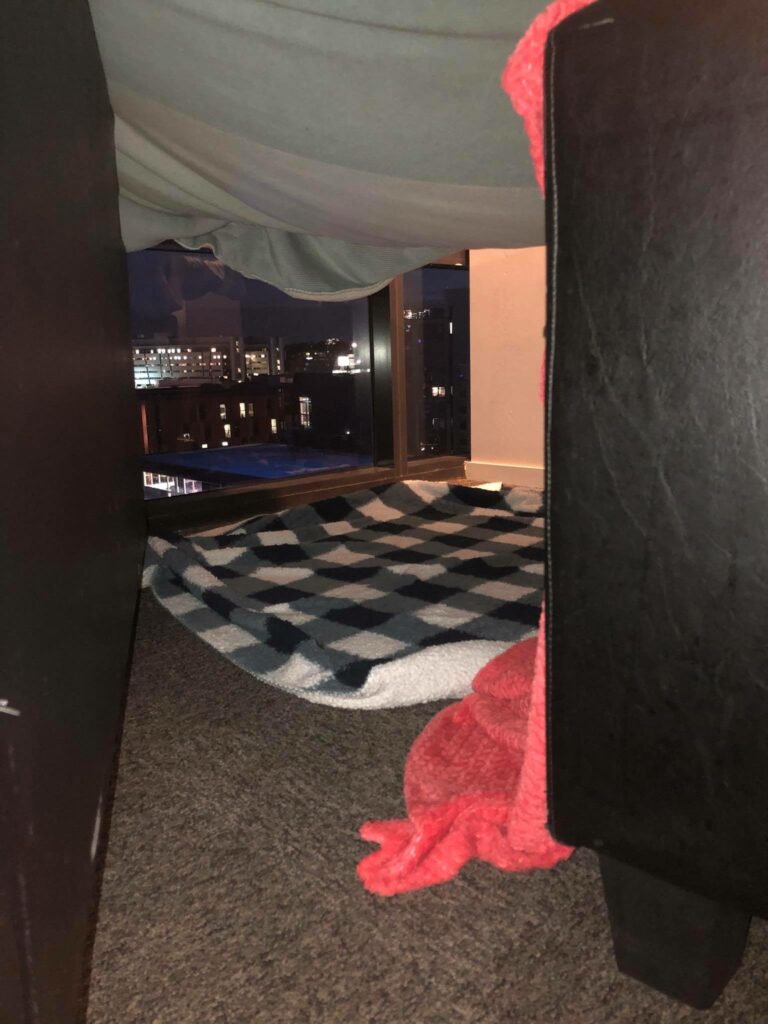
Fort Entrance
Comfort is something we aspire to have everyday. In situations we are put through in our everyday lives, we constantly ponder on whether we feel comfortable with the things we are doing. Sometimes it is good to step outside of our comfort zone, but also sometimes it is healthy for us to stay within a zone where we are comfortable.
In this brief I unpacked and explored different layers of comfort, and also the way in which objects can make us feel comfortable in different ways. The four different blankets pictured above are all sentimental objects. They were purchased on the day we first met each other, I figured these would create a good starting point for the sculpture. After experimenting with the blankets, I decided to design a fort in my living room using my two couches, the blankets and a few pillows. Blankets forts are a common creation throughout many childhoods. I figured this would be an interesting way to explore comfort, as I know when I was younger I would build forts typically to sleep in. Creating a fort allowed me to discover the nostalgia within it, and how with nostalgia you are able to feel comfortable drifting into the memories. With the use of the blankets, the element of physical comfort was able to be felt. Obviously with the softness and warmth felt from the blankets, this would create a comfortable environment.
The sculpture I was able to create from using objects allowed me to look into the ideas of nostalgia, warmth, softness, sentiment and memory, all things that are integrated with comfort. The exploration of these ideas made me have more of an appreciation for the fort sculpture that I created. The relationship between the sentimental blankets with the nostalgic fort created different layers of comfort within the sculpture.
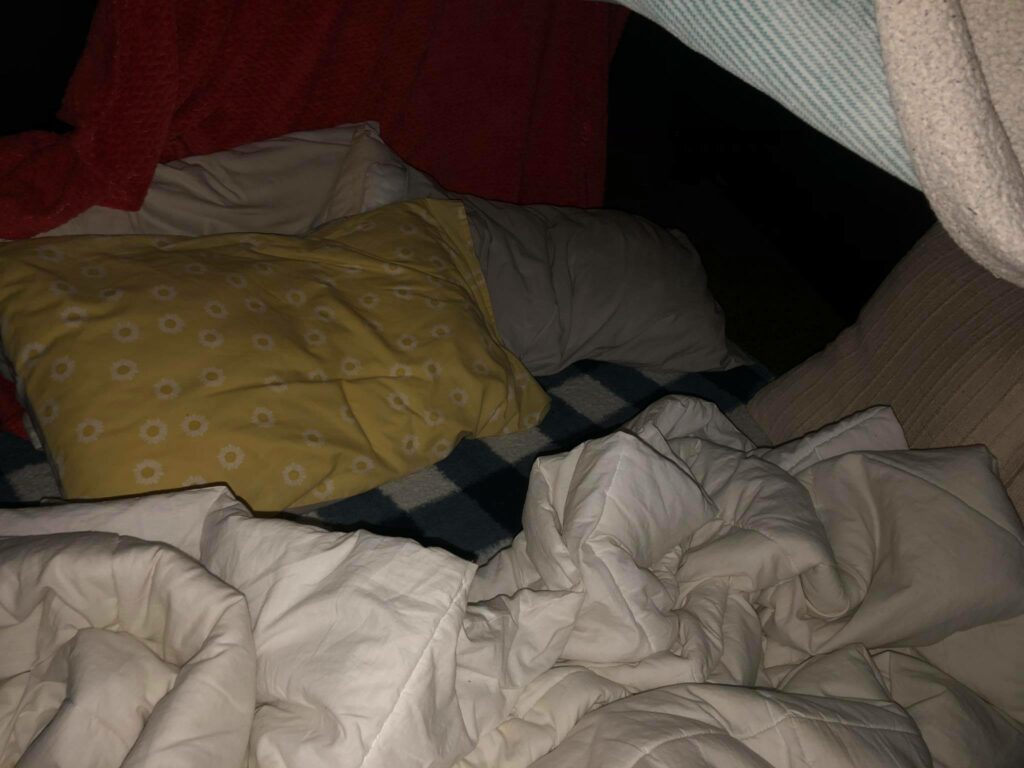
Human Impression
I took some time to let myself relax into the blankets and pillows within the fort, and think about the feelings I felt within the fort. To bask in the child-like feeling that the fort created. Also the reminiscent feeling that the blankets created. After around what seemed like a long time, I got up reflected on the mark that had been created by myself from laying in the space. The sight of scrunched up blankets and pillows created a visual representation of what physical comfort looks like. For a lot of us, the sight of a messy bed is relatable during the time of a lockdown as much time is spent in the comfort of our beds. ‘Oh, So Quiet’ is a prominent feeling I felt as I lay in the fort, staring out of the huge windows in my apartment.





















